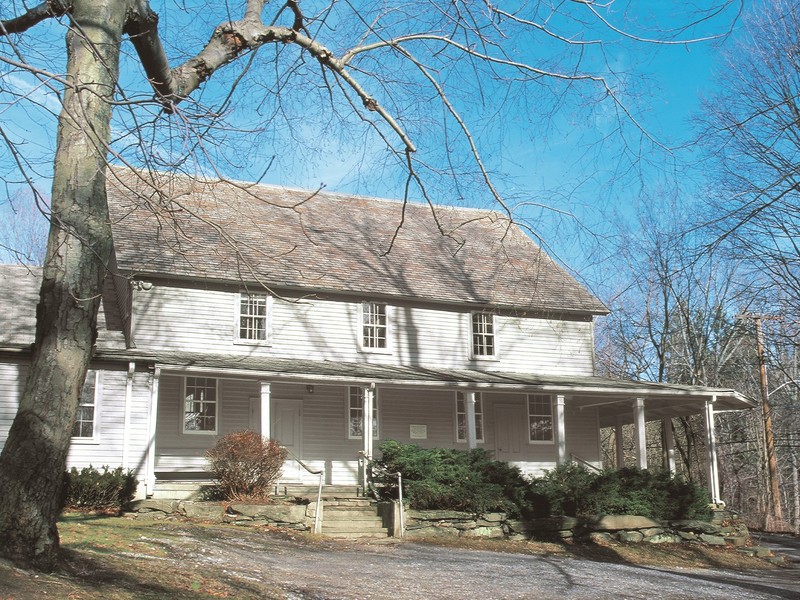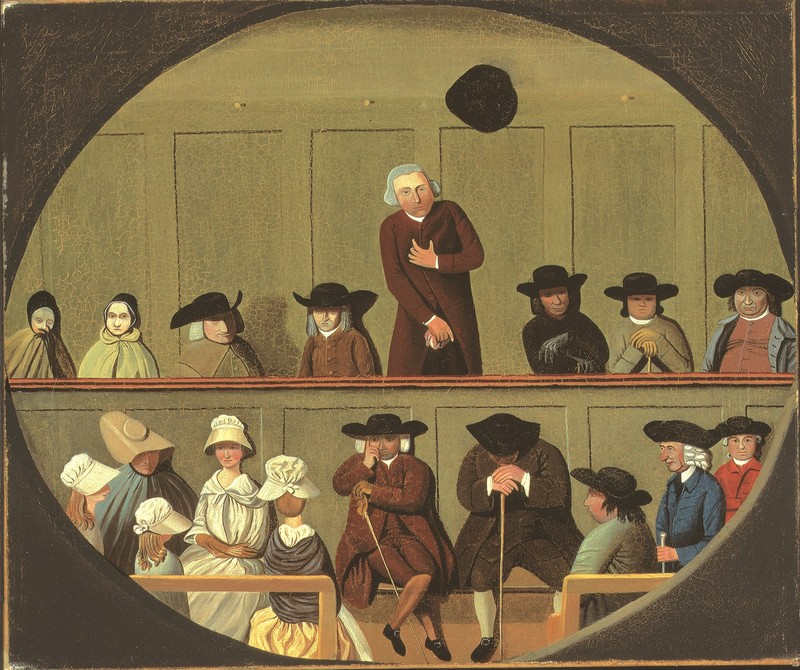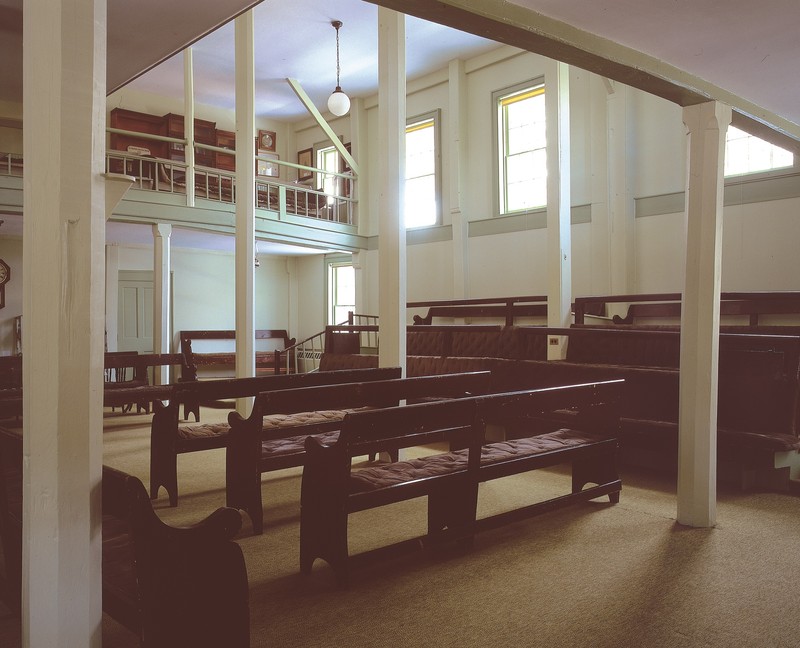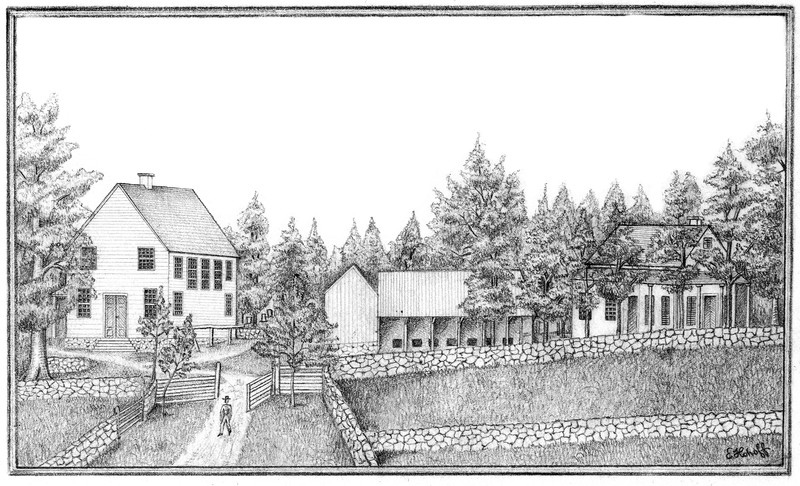The Friends Meeting House
Introduction
Text-to-speech Audio
Images
Chappaqua Meeting House

Quaker Meeting

Interior of Chappaqua Meeting House

Drawing by E. Hohoff, before 1888. Chappaqua Friends Meeting

Backstory and Context
Text-to-speech Audio
“The Chappaqua Meeting House was originally constructed in 1753 and enlarged to its present size shortly after the end of the Revolutionary War. It has a standard design that goes back to the 17th century.”1 Standing on a slight rise on the West side of Quaker Road, the building has two separate entrances, one for men, one for women. It has no stained-glass windows and does not feature decoration within the interior. Movable benches and panels inside allow for an ease of access between congregants and for meetings, this is a common feature within Quaker buildings of the 18th century.
Since its construction “the Meeting House has been enlarged twice: first in 1778-1780 by the side addition of a 20-foot by 18-foot wood-frame wing in the west side, and second in 1961 by the construction of a west wing.”2 The extensions have allowed for more followers to come over the centuries and decades and made it so space is of no issue. Even today, followers of the faith can go to the Meeting House and practice/attend meetings.
The house has served as a meeting place for Quakers in Chappaqua and neighboring areas in Westchester County, making it a location where the faith could practice in peace. For the Quakers of the 18th century and still today “they believe in equality, of men and women, and of all races and nationalities.”3 The Quakers additionally believe in refusing to engage in war or any type of confrontation, meaning they are a people of peace.
Quakers expect truthfulness and fairness in all interactions with others. This mindset led the members of the society to rethink their stance on slavery, and what it meant to own the life of another human being. “Because the Quakers believed that all people had access to the inner light and were equal before God, they were the first Christian denomination to conclude that ownership of fellow human beings was wrong.”4
The Quakers of Westchester County who attended meetings in houses much like Chappaqua’s began questioning the morality of slavery in the late 18th century. They served as a catalyst for its abolition in New York during the time leading up to the Civil War. In 1767, the Quakers stated that “[it] is not consistent with Christianity to buy or sell our fellow men for slaves”5. They went on to free the slaves that were in their possession, and provided them with land to settle and farm on.
Actions carried out by these Quakers regarding the freedom of enslaved people would influence the creation of important landmarks and societies pertaining to African American history within Westchester County. One example is “The Hills,” a vibrant community of free Blacks located in Harrison that coexisted with their Quaker neighbors in nearby towns.
Sources
- Williams, Gray. Picturing Our Past: National Register Sites in Westchester County . Elmsford , NY. Westchester County Historical Society , 2003.
- Weaver, Lynn B.. Old Chappaqua Historic District. National Register of Historic Places Inventory. Published October 1st 1973.
- Williams, Gray. Picturing Our Past: National Register Sites in Westchester County . Elmsford , NY. Westchester County Historical Society , 2003.
- Williams, Gray. Picturing Our Past: National Register Sites in Westchester County . Elmsford , NY. Westchester County Historical Society , 2003.
- Westchester County Guide To African American History and Heritage, Visit Westchester County NY. Accessed February 5th 2020. https://www.visitwestchesterny.com/things-to-do/history/african-american-history/.
Williams, Gray. Picturing Our Past: National Register Sites in Westchester County . Elmsford , NY. Westchester County Historical Society , 2003.
Williams, Gray. Picturing Our Past: National Register Sites in Westchester County . Elmsford , NY. Westchester County Historical Society , 2003.
Williams, Gray. Picturing Our Past: National Register Sites in Westchester County . Elmsford , NY. Westchester County Historical Society , 2003.
Williams, Gray. Picturing Our Past: National Register Sites in Westchester County . Elmsford , NY. Westchester County Historical Society , 2003.
